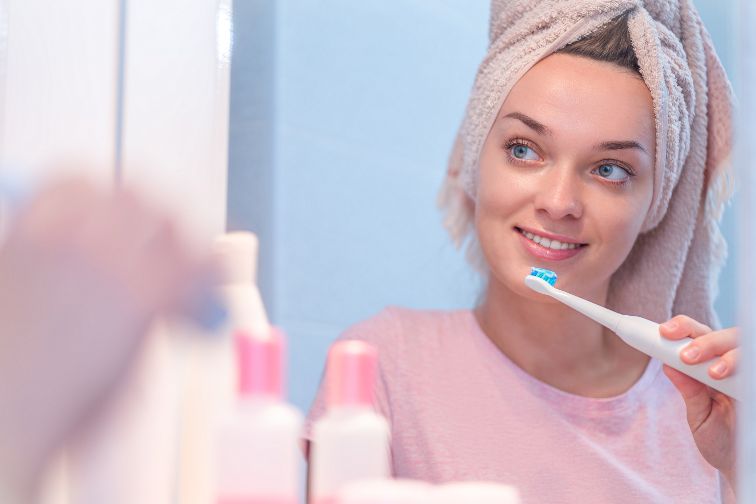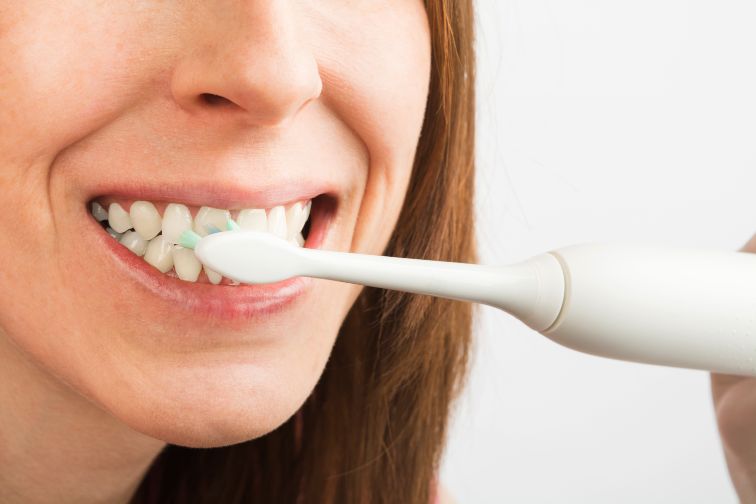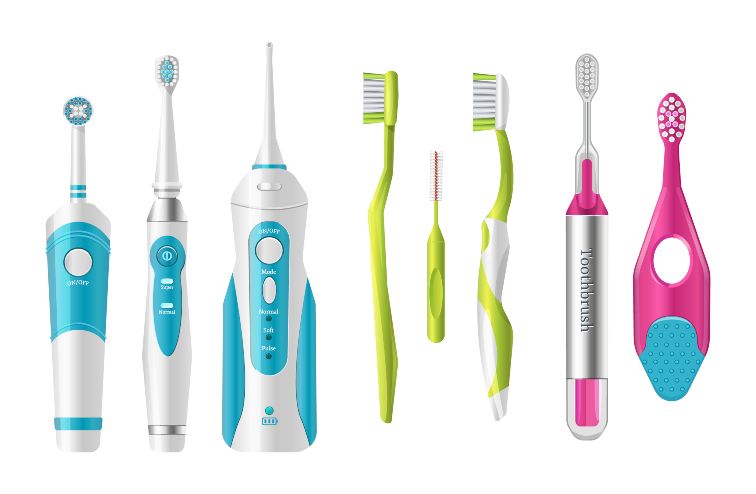Mom was right when she nagged you about having to brush your teeth regularly. After all, it’s fundamental for our overall oral health and disease prevention.
Most dentists recommend brushing teeth at least twice a day for optimal results.
The reason why we should spend time brushing our teeth after every meal is that it minimizes the growth of harmful bacteria in our mouths.
So for decades (some sources claim even centuries), the pillar of good oral health was associated with your regular toothbrush. However, an increasing number of people are nowadays switching to using an electric toothbrush.
If used properly, both manual and electric toothbrushes have their advantages and are an effective means of plaque removal - bacterias that cause tooth decay and oral diseases. So what are the perks of an electric rechargeable toothbrush and how exactly does it work compared to the regular one?
In this blog post, we will get down to the nitty-gritty about the electric toothbrush: how it works, how to brush your teeth with it, and is it better than a manual toothbrush?
After reading it, if you are still having trouble determining which type of electric toothbrush would be perfect for you, make sure to consult with your dentist for professional advice and health information.

As we said, the primary goal of the vibrating toothbrush is to eliminate any attached dental plaque that forms on your teeth. Dental plaque is nothing but an accumulation of different microbes in a mesh-like structure on the cover of the teeth. Due to disparate plaque properties, some of these microbes can be more resistant to regular antimicrobial therapy. Well, more than usual, that is.
This might explain why physical removal of plaque is super important in preventing general dental diseases, gingivitis/periodontitis, and teeth decay being the most common ones.
We’re all familiar with how a regular toothbrush works: move the head of the toothbrush in a petit circular motion at a 45 degree angle to reach even the remotest of parts of your mouth, such as the back teeth and gums. Grazing the brush head along with the tongue and the roof is a good way to ensure your breath smells good.
But, how does an electric toothbrush work? As the name suggests, the electric toothbrush uses the automated motion of the head of the brush in order to clean teeth and remove any microbes. It isn’t necessary to press hard and hold the brush head in place for a few seconds against each tooth. This totals to at least two minutes of brushing.
Many electric toothbrushes are battery powered and have charge level indicator lights. Not only that, electric toothbrushes usually include a removable brush head, circuit, rechargeable battery, charging station, a cam and gear, as well as a small motor with an on/off switch.
Depending on the technology and design, electrical toothbrushes often possess several motions and speeds. This can be extremely helpful for people with decreased manual dexterity.
Classification based on the motion of the brush:
Classification based on the speed of the brush:

Brushing your teeth with an electric toothbrush is not rocket science but it has some ground rules. The most important one is this: do not press hard or scrub.
This is the most common misconception when switching from manual toothbrushes to electric ones. Instead, simply guide the brush around your mouth gently while it’s turned on.
Some of the electric toothbrushes even have pressure sensors that will alert you if you are brushing or pressing too hard. Neat, isn’t it?
To get a general sense on how to brush your teeth properly and improve your brushing technique, here’s a list of helpful steps:

Compared to a manual toothbrush, one of the main electric toothbrush benefits is a superior removal of plaque. The brushing action requires minimal physical exertion, so you can focus on cleaning your teeth.
Is an electric toothbrush better? Let’s check out some of the advantages in this electric vs manual toothbrush standoff:
Built-in timers - Most of the electric toothbrushes have built-in timers that help you clean your teeth long enough to efficiently remove bacterias and plaque, honouring the ‘two minute’ brushing rule.
Ease of use for people with decreased mobility - Oscillating-rotating toothbrushes do most of the work for you, which can be particularly useful for people with arthritis, carpal tunnel, and other disabilities associated with joint pain.
Less waste - Regular toothbrushes must be replaced every three to four months, so waste tends to accumulate on an annual level. People who use an electric toothbrush, on the other hand, only have to change the brush head.
Fun for kids - Most common reason why you are taking your children to a pediatric dentist is that they tend to avoid brushing their teeth. But unlike manual toothbrushes, electric toothbrushes tend to be more engaging for a child, making it easier to establish healthy habits for your children. Also, there is less chance for a child to press hard or scrub with an electric toothbrush, potentially causing mouth injuries.
Gentler on the teeth and gums - If you use an electric toothbrush properly, the chances of damaging your enamel and hurting your gums is drastically minimized.
One final, yet equally vital thing in keeping your teeth healthy and clean is the regular maintenance of your electric toothbrush.
But a question hangs in the air: how to clean an electric toothbrush head?
Well, most of the time, you can clean an electric toothbrush the same way as a regular one. Use warm water to clean the head and store it in a dry and clean place. Just don’t forget to disconnect the brush head from the base before cleaning it, otherwise, it can break.
Lastly, here are several useful tips on how to keep your device clean and ready for use at any time:

